Contents


Daikon is a root vegetable crop bred by Japanese breeders from the sowing radish known to us. In Japanese cuisine, this vegetable is an essential ingredient in most dishes. In our country, long white root crops are more common in markets and supermarkets, but vegetable growers are not in a hurry to plant daikon on their plots. Meanwhile, growing a daikon, planting and caring for which does not cause any particular difficulties, is within the power of even a novice gardener, since the agricultural technology of the culture is practically no different from growing an ordinary radish or radish.
Seed sowing
Daikon seeds can be planted immediately in open ground, or in containers (pots, containers) for seedlings. In the climate of the middle lane, the first method is more often used, since the daikon is an early ripening crop, and during summer planting it has time to ripen before the onset of cold weather, moreover, it is easier to sow the daikon immediately into open ground. With any method, the sowing technology is no different.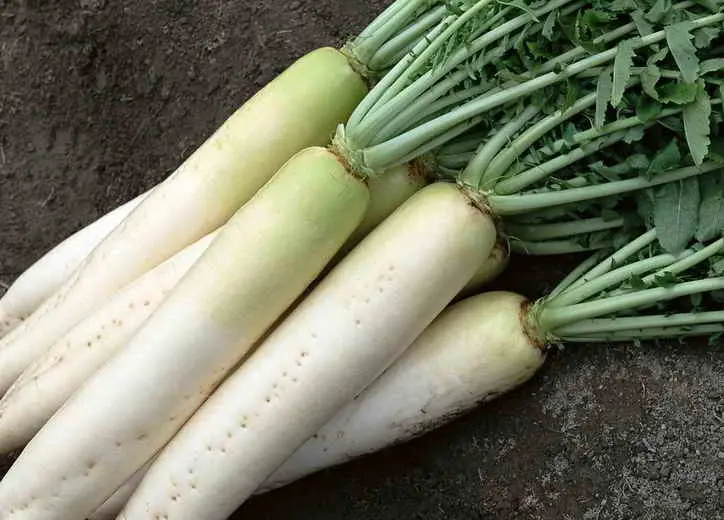
In order for sprouts to appear as soon as possible, seed material should be prepared. There are several simple ways to do this:
- the first is easy stratification – the seeds are placed in well-heated water (50 ° C) for half an hour, then quickly cooled in ice water, and then placed in the refrigerator for a day in the lower (vegetable) compartment;
- the second – the seeds are poured with warm (about 40 ° C) water for a day, after which they are slightly dried;
- and the last way – the seeds are placed in a well-moistened cloth or gauze, and put in a warm place for a day.

Soaking grains is only an opportunity to accelerate their germination from the soil, and not a mandatory procedure. Many vegetable growers sow dry daikon seeds in open ground or pots, but in this case, the soil must be watered abundantly, and then maintained constant moisture until sprouts appear.
Video “How to plant a Daikon”
In this video, an experienced gardener gives advice on how to properly plant this vegetable.
Growing seedlings
Through seedlings, it is recommended to grow daikon radish with rounded or oval root crops – varieties with a long rhizome do not tolerate transplanting and picking, so it is preferable for them to sow directly into open ground.
The timing of planting depends on many factors: crop varieties, climatic conditions, expected harvest time, but on average, sowing is done about a month before transplanting to the garden – at this age, plants usually have 3-4 permanent leaves.
To obtain seedlings, it is easiest to plant seeds in a special peat mixture (peat tablets), with which they are then transplanted into the ground, but they can also be planted in ordinary boxes or pots. In this case, you need to remember that the root of the daikon is long, and so that the sprout is not cramped, the depth of the dishes should be at least 10 cm.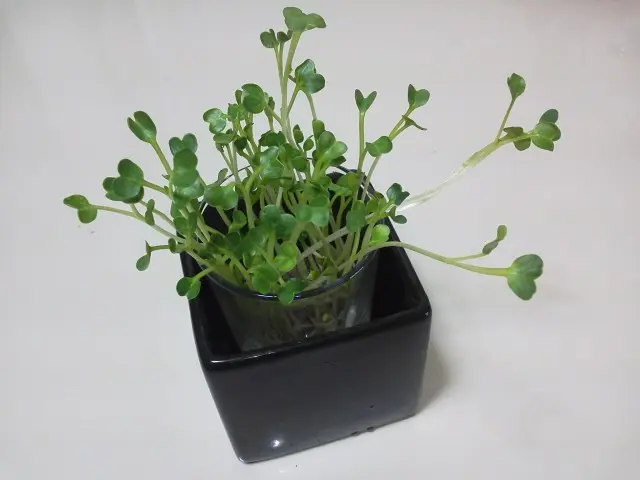
If ordinary land is used for planting, then it should be mixed with peat and humus in equal proportions. Next, the prepared soil mixture should be well watered, after which the daikon should be planted to a depth of 1,5-2 cm.
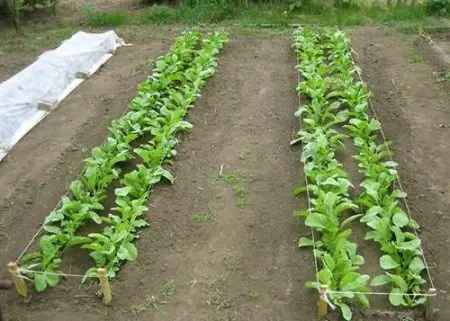
To create the most favorable conditions for germination, the container is covered with glass or film and placed in a warm place. After 5-7 days, when the first shoots begin to appear, the shelter is removed, and the pot is moved to a lighted place. After the daikon has ascended, caring for it consists only in periodic watering and loosening the soil. When the first pair of true leaves appear, seedlings are thinned out, leaving the strongest plants.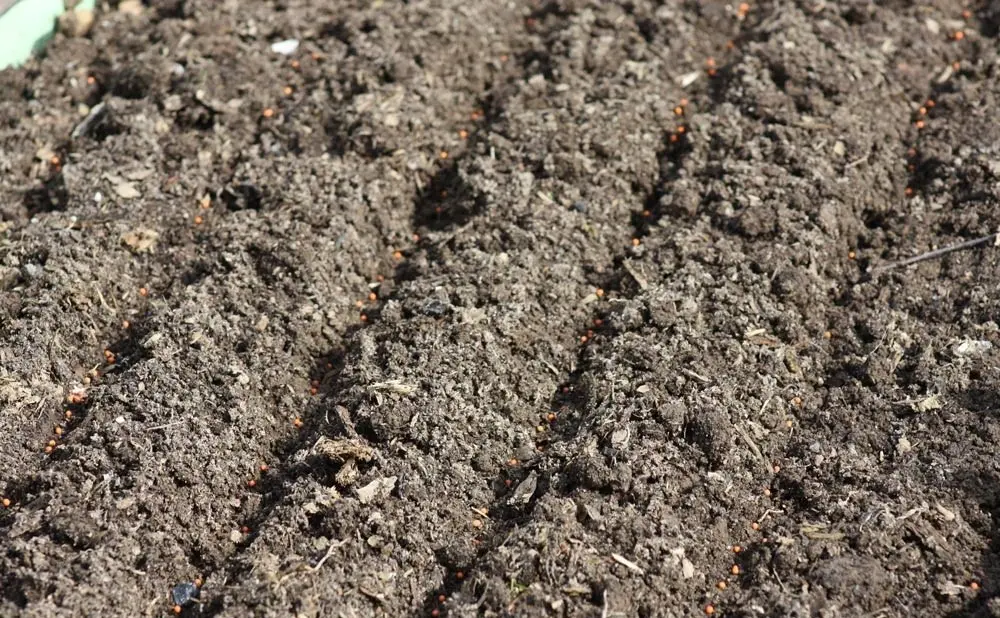
About two weeks before the proposed transplant, the seedlings are hardened off – they are taken out daily for several hours, gradually increasing the residence time until the plants can be in the fresh air for a whole day. During this period, it is important to ensure that the daylight hours for seedlings are not too long, otherwise the ground part of the plants will stretch out and the roots will become weak.
Terms of planting
The main and, probably, the only problem that vegetable growers face when growing daikon is the shooting of plants even before the root crop ripens. This happens because the landing dates are not met. Daikon, like radish or radish, grows best in cool conditions (18-20 ° C) with a daylight duration of no more than 12 hours. With more daylight and higher air temperatures, the growth of the root crop stops, and the plant begins to shoot arrows and blooms.
To avoid shooting, it is necessary to plant the crop at the right time: in early spring, or in the middle of summer, when the day length is on the decline.
For mid-season and late varieties, the first half of July is considered the ideal time for planting; in the southern regions, this period may shift to the end of July or the beginning of August.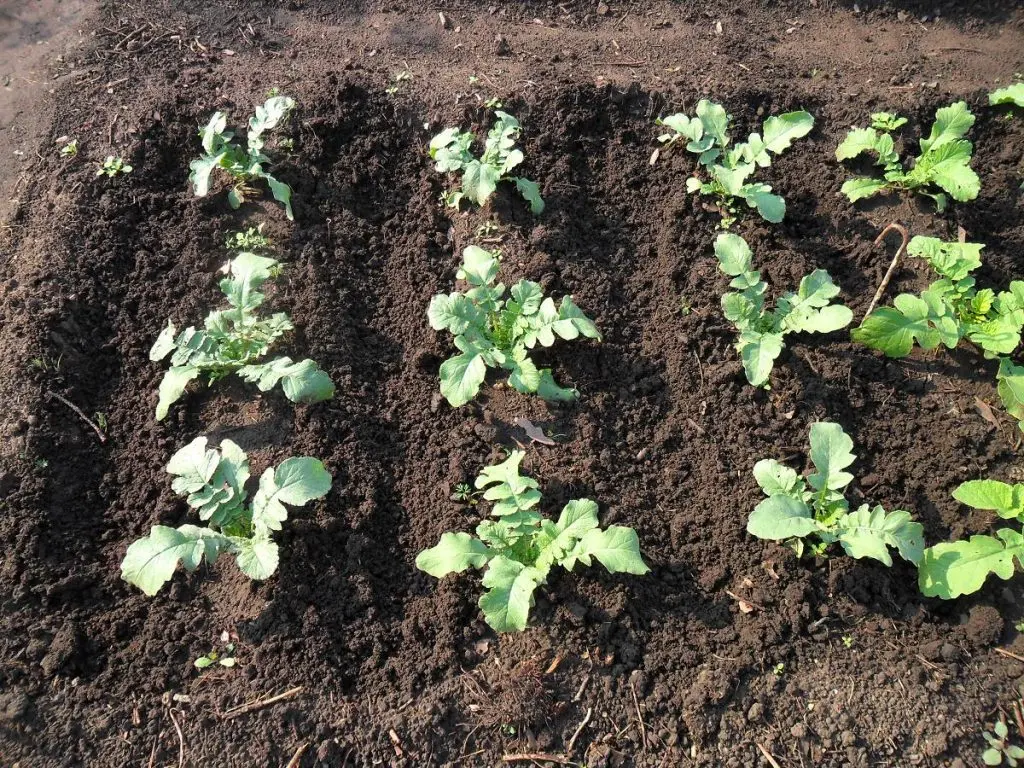
The duration of the full vegetation of the daikon is on average 60-100 days, but some early varieties ripen even after 40-45, so they can be planted in the spring – as soon as the snow melts.
No need to be afraid that the seeds will freeze. Daikon, like radishes, perfectly tolerates small frosts, and is able to germinate at a soil temperature of + 3-5 ° C, so planted in early spring, it will have time to ripen before the onset of summer heat. At a later date (late April – early May), it is not worth sowing a crop, unless the goal is to obtain seeds. It is best to plant daikon on seeds at the end of May, then by August it will be possible to collect planting material, but, again, it all depends on the variety.
The choice of planting dates in accordance with varietal characteristics is an important condition for a high and high-quality harvest. Carefully read the recommendations on the timing of sowing on the seed package, and be sure to adhere to them. In spring, only early varieties with a growing season of 1,5-2 months can be sown. Autumn varieties with a long ripening period should not be planted in the spring – they can immediately go to flowering, while skipping the phase of root formation.
Ground
Daikon is not picky about the soil. Some of its varieties are able to grow even in heavy clay soil, but loose sandy or loamy soil with neutral acidity is ideal for culture – roots do not form in acidic soil, and plants begin to hurt.
It is advisable to prepare a bed for growing daikon in advance: for spring sowing in autumn, and for summer sowing in spring. If you have time, you can sow green manure – the daikon feels great in areas rich in humus. And so, first, the site is dug up to a depth of 20-25 cm. If the soil is not fertile enough, during digging, mineral (potassium sulfate 20 g, superphosphate 40 g) and organic (compost, humus 0,5 buckets / m²) fertilizers are added to it.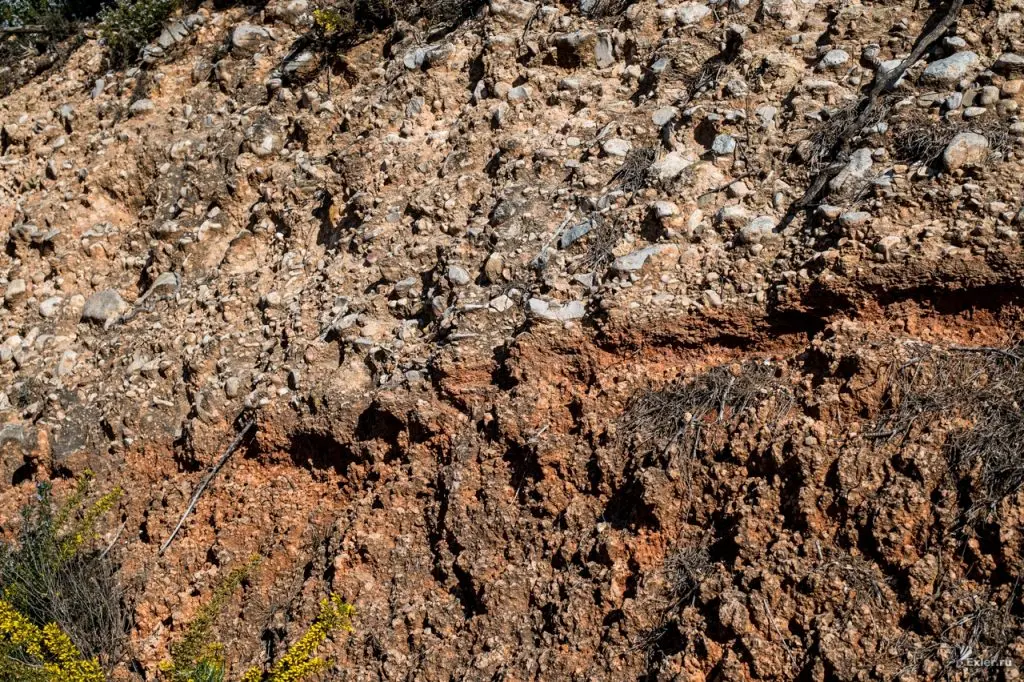
Lime must be added to acidic soil, but it should not be applied at the same time as fertilizers – it is better to do this two weeks before digging. Immediately before sowing the crop, it is recommended to add ash (1 cup / m²) – from its presence in the soil, the taste of root crops significantly improves. Daikon grows well after potatoes, dill, onions, tomatoes, cucumbers. It is not advisable to plant a crop after any cruciferous plants.
How to plant in open ground
Daikon planting by both seed and seedling methods is most often carried out according to the 30×60 cm scheme, where 30 cm is the distance between plants, and 60 cm is the distance between the rows, however, here it all depends on the variety. For varieties with round roots, as well as with a voluminous aerial part (tops), such a scheme is most acceptable, but for narrow and long roots of small diameter, a more compact planting is acceptable, for example, 20×40 cm.
Seedlings or seeds are planted in pre-moistened soil, in which holes are made (for seedlings), or long furrows for seeds, however, they can also be planted in shallow holes. In the furrows, the seeds are placed in nests of 2-3 pieces at a distance of 20-30 cm, depending on the varietal characteristics. Then the holes are covered with earth, compacted a little, and then mulched with a thin layer of peat.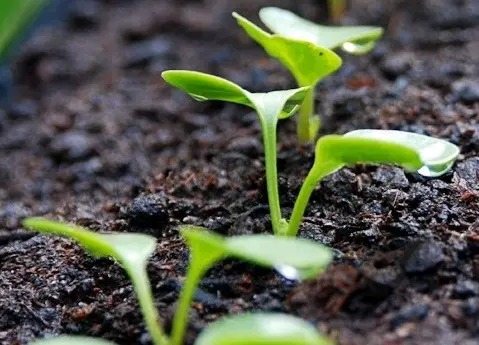
Under favorable conditions, the first sprouts appear after 5-7 days from sowing. They easily tolerate spring night frosts, but in order to preserve crops for sure, it is recommended to cover the bed with a film at first at night, and remove it during the day when it gets warmer. When 2-3 true leaves appear, the plants are thinned out – the weak ones are removed, and the strongest one is left. Further care for the radish consists of watering, loosening the row spacing and periodic hilling, since the roots of most daikon varieties protrude above the soil surface.
Planting for the winter
Podzimny sowing of daikon is convenient in that it is possible to use areas that have already been vacated after harvesting. In addition, this method is often used in the southern regions, where spring quickly gives way to summer, and it is not always possible to get a crop of early root crops. Sowing in late autumn solves this problem, since seeds sown before winter germinate very quickly and early. In addition, winter sowing allows you to get not only an early, but also a better harvest, since the largest and healthiest specimens survive in severe frosts.
The technology of winter sowing in open ground is no different from summer and spring. However, it is important here to meet the deadlines and not rush to disembark. Since daikon seeds germinate very quickly and at fairly low temperatures, it is likely that seedlings will appear in the fall, in which case you can forget about the harvest. Therefore, it is better to sow the daikon in wells dug in advance after the first frosts, and dig them in with already frozen ground.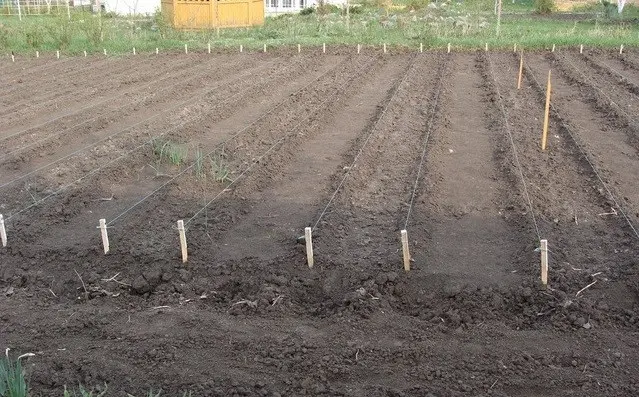
After planting, the bed is covered with a small (4-5 cm) layer of peat, leaves, or humus – this helps to keep the soil loose and prevent the grains from freezing. Until spring, no care is required for the garden bed. When the snow melts, the mulch should be carefully removed and the surface loosened shallowly. Further care measures are standard: watering, weeding, hilling. Thus, with a minimum investment of time and money, you can get a fairly high yield of tasty and very healthy root crops.
Video “How to care for Daikon”
In this video you will see how to properly care for this vegetable.










